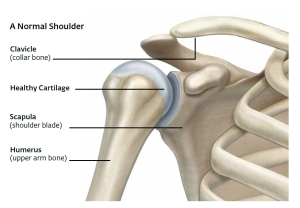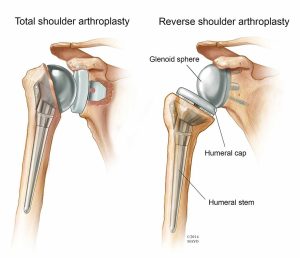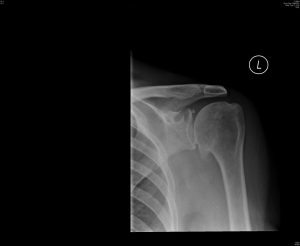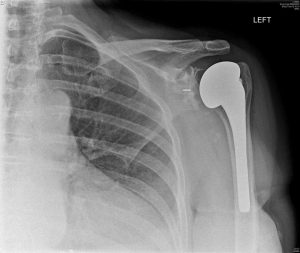shoulder replacement
About your shoulder
The shoulder is a’ ball and socket’ joint with a large ball and shallow socket. This allows the shoulder to have a large range of movement. The shoulder rotator cuff is a group of muscles that keeps the ‘ball’ centred in the socket when we move our shoulder. Due to arthritis, the shoulder joint can become painful. There can also be a reduction in range of movement and function can be affected.
Why The Joint Need To Be Replaced ?
Osteoarthitis Right Shoulder on X-Ray


What Is The Procedure & What Does It Involve ?
PROCEDURE
Just like a Hip or a knee replacement, a Shoulder Replacement replaces the damaged joint surfaces with an artificial joint (Prosthesis). The joint is opened at the front of shoulder using a 10-12cm skin cut. Generally, I do this procedure with general anaesthesia supplemented with an interscalene block to help with pain relief following your surgery.
AIM
The primary aim of the surgery is to reduce the pain in your shoulder. After surgery, you will hopefully have more range of movement and improved function.
TYPES
There are 2 types of Total Shoulder Replacement: Anatomical and Reversed. For the standard total shoulder replacement to be done, your rotator cuff should be in good functional condition. If not, you will need either a reverse shoulder or a hemiarthroplasty (replacing only the ball but not the socket).
What Are The Risks Of The Procedure ?



